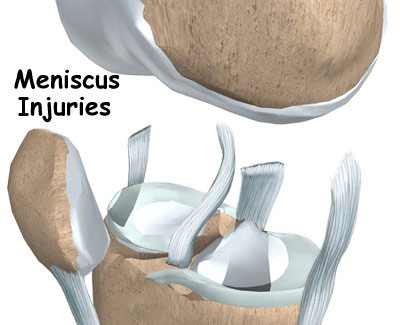These are the most common knee injuries. The menisci are two pads of fibrocartilage on either side of the knee that act as cushions or shock absorbers. They also help distribute the weight load inside the knee.
Most tears of the meniscus result from a sudden twisting movement of the knee, as often occurs in sports injuries. As the knee bends and twists, the meniscus may be pinched between the bones. This is often accompanied by a "popping" sensation. The knee is likely to swell a few hours after the injury.
The tear may occur along the inner edge of the meniscus, or, less commonly, along the outer edge. There may be just a small torn "flap" of the meniscus, or a longer so-called "bucket-handle" tear, which is a tear along the length of the meniscus. Such a tear may cause the knee joint to "lock," meaning that the leg cannot be straightened.
The menisci may be also become damaged and torn as part of normal wear and tear within the knee joint as we age. All types of meniscal tears can be treated by arthroscopy. Because the inner part of the meniscus has no blood supply, a tear along the inner part will not heal.
Treatment, therefore, involves trimming away the torn piece of the meniscus. This is done with miniature motorized instruments inserted through a tiny incision on the side of the knee.
Meniscal injuries along the outer edge of the knee may be repaired rather than removed because the blood supply to this part of the meniscus is better, giving an improved chance of healing.


